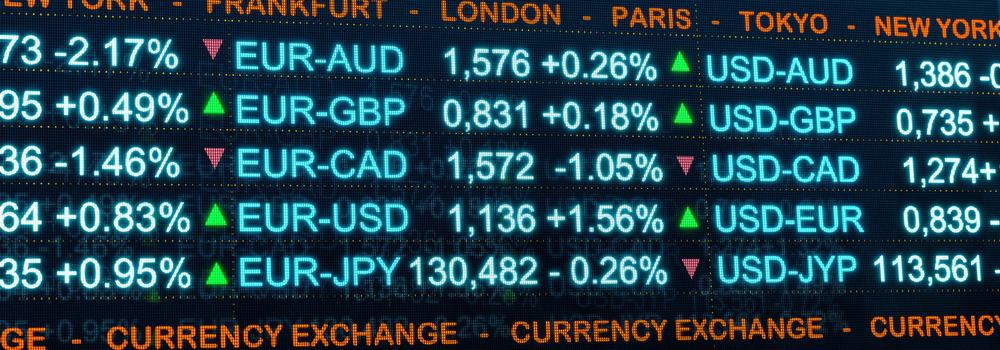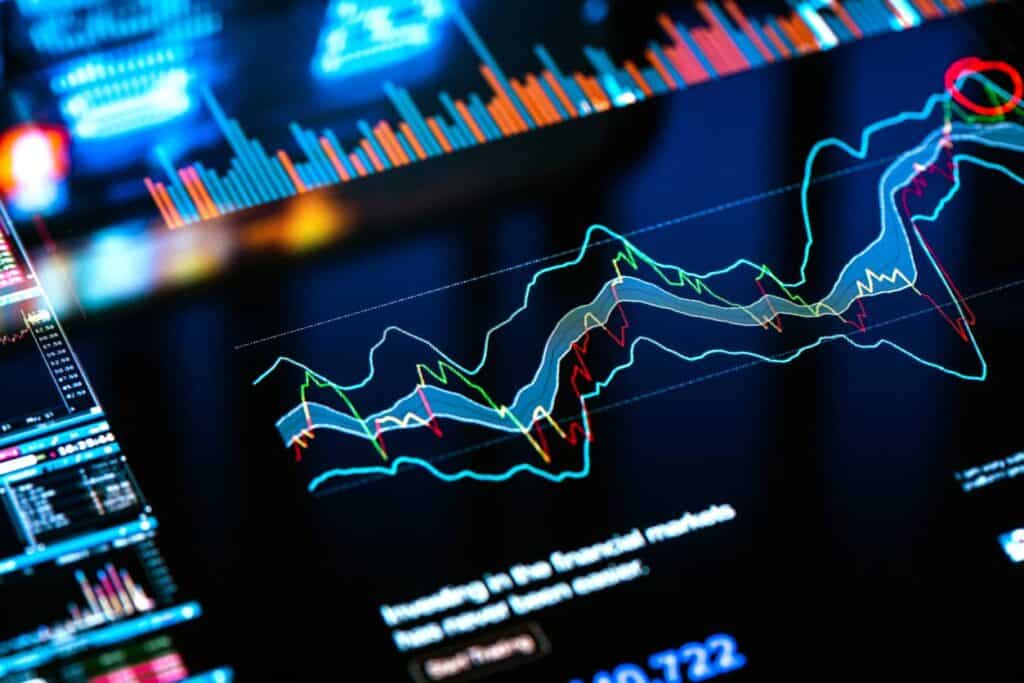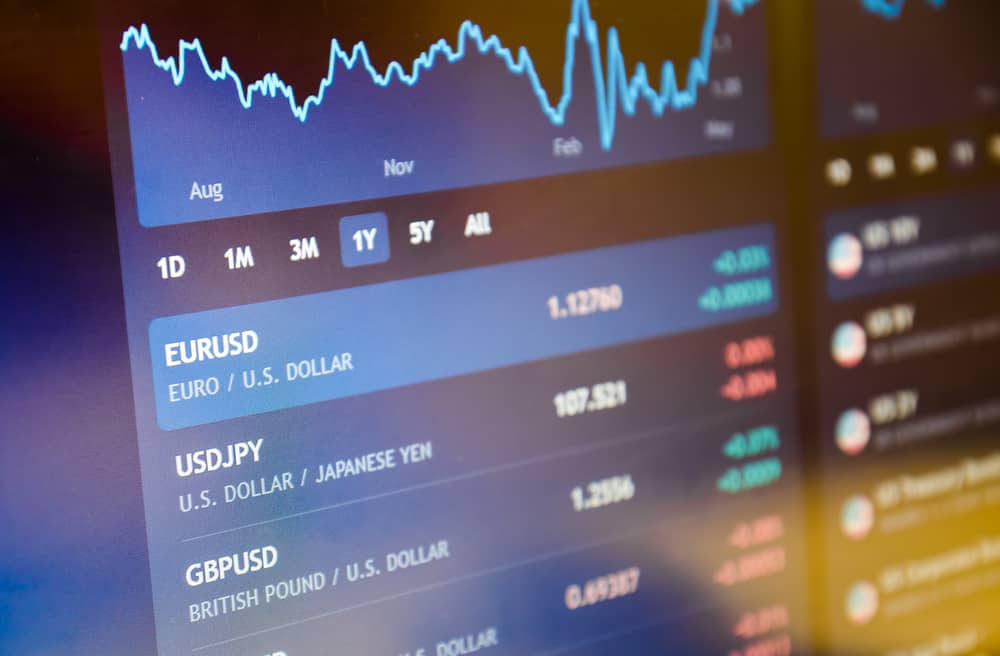

If there were no volatility in the foreign exchange market, then traders would have no dependable source for creating opportunities for gain. To the amazement of central bankers and government officials, the floating of currency pairs back in the seventies was supposed to be a non-event. Up to that point, rates had been fixed daily with small adjustments over time to accommodate changes in interest rates, trading reserves, inflation, and other economic factors.
When currencies were released from these chains, speculators stepped in and wild swings erupted in immediate volatility, which no one expected. Arbitrage opportunities were plentiful, but the sheer volume of attention by speculators over the years gradually brought volatility in the forex market back down to acceptable norms.
What is volatility in the world of forex? Volatility is the rate of change that prices experience for a selected currency pair over a chosen period of time. Economic announcements, geopolitical strife, trade wars, and monetary policy adjustments can result in wild swings in value, but over time, the height of these waves gradually subsides, as when a rock is thrown into a pool of water. The primary benefit of speculators in a market is to regulate volatility in quick order.
Volatility is a good thing for traders in that it does create profitable opportunities for trading, but too much volatility can spoil your day, as well. When price behaviour is too chaotic, Bid/Ask spreads may widen enormously. Execution speeds may suffer, and prices may jump beyond any stop-loss orders in play. It is best to wait on the side-lines when the forex market is too choppy.
Are some volatile forex pairs more volatile than others? Pairs involving major currencies, especially when paired with the US Dollar, can be volatile to a degree and in a dissimilar fashion. For example, the prices for the GBP/USD pair versus the EUR/USD pair can fluctuate on a given day anywhere from 25% to 50% or more on a purely transactional basis.

Minor and exotic pairings can also fluctuate to a higher degree due to lower liquidity and the nature of the respective country’s economic condition. For countries that are heavily dependent upon exports of raw materials, the price points for those raw materials can indirectly impact the value of the nation’s currency, as well. Developed countries also tend to be more stable than countries with developing economies.
In this article, you will learn about which pairings are the most volatile forex pairs. These comparisons are usually made over long periods of time to arrive at general averages. On a given day, however, volatility can exceed these expectations when factors are in turmoil. We will also provide guidance on how to trade a volatile forex pair and what indicators can provide welcomed insights. For the pairs listed, rankings can always change as economic, monetary, geopolitical, and trading influences ripple around the globe. Volatility, however, will exist in some quarter.
The Most Volatile Major Forex Pairs
Major pairings involve the USD paired with any of the other seven major currencies. The most volatile pairings of this group, based on recent calculations, include:
- GBP/USD: Of the major pairings, pound Sterling tops the ranks. Trade flows and economic stability weigh heavy, as does monetary policy. The GBP/USD pair is often likened to the EUR/USD pair on ‘steroids’.
- USD/JPY: This pairing tends to be very reactive to announcements by the Bank of Japan, which are frequent. The BOJ also has a habit of intervening to ensure the yen hits desired targets.
- AUD/USD: The value of AUD is driven by its wealth of commodities, but demand can fluctuate, as can the value of these commodities, which have a direct impact on the currency down under.

The Most Volatile Minor Forex Pairs
Minor pairs, sometimes referred to as ‘crosses’, are also popular, but liquidity will be less than pairings with the USD. Here are a few from this group to consider:
- AUD/JPY: The inverse relationship shared by these two countries has an impact on the volatility of this cross as economic outlooks shift. Australia exports commodities. Japan imports them.
- NZD/JPY: Similarly, the NZD is also a commodity currency, the opposite of the yen. As prices for New Zealand’s products fluctuate in global markets, this forex pair reacts accordingly.
- GBP/EUR: This pairing of the pound versus the euro has seen an uptick in volatility, particularly in recent times due to the uncertainty surrounding Brexit. Both governmental infrastructures make independent policy announcements, which take time to predict the impact on trade.
The Most Volatile Exotic Forex Pairs
Exotic pairs tend to be with developing economies, have even less liquidity, and may be difficult to find. Brokers may carry USD pairings with these exotics in their portfolio offering:
- USD/ZAR: The US dollar is paired here with another commodity currency, the South African rand, which, in turn, is driven by the price of gold.
- USD/TRY: The Turkish lira has been reeling in forex markets since political instability became a national issue in Turkey in 2016.
- USD/BRL: Brazil is an emerging market economy with a bright future, but political instability and intrigue continue to plague the local situation and currency valuations.
- USD/MXN: The Mexican peso suffered greatly during the Trump administration due to tariffs and trade wars. Its value was cut in half in 2020, but it has recovered of late.
How to Trade Volatile Forex Pairs
Volatility is often said to be equivalent to risk, and your ability to trade in these choppy waters depends to a degree on how much tolerance you have for dealing with risk. One general rule is that volatility tends to increase for currency pairings where low liquidity is the rule. Wide Bid/Ask spreads can handicap your entry and exit of a position, but as long as you have a tested trading strategy, adhering to sound risk management principles, then fear should not be an issue.

Since volatility swings have a habit of scooping up stop-loss orders, it is wise to set your stops a bit further from your position than normal. Tie these levels to a multiple of the ongoing Average True Range (ATR), as appropriate. Also, lower the size of your position until comfortable. Set a target for exit, but ride the trend if there is strength behind it.
The Best Forex Brokers
If you wish to trade the most volatile forex pairs, you will want a broker that is safe and has a reputation for tight spreads and quick execution speeds. In order to make your selection process an easier one, we have provided a list of the Best Forex Brokers below, which we continually update, based on current reviews of their offerings and news in the marketplace. All of these brokers are top-of-the-line and worthy of your consideration.
| Broker | Features | Regulator | Platforms | Next Step | |
|---|---|---|---|---|---|
 Your capital is at risk
Founded: 2014 Your capital is at risk
Founded: 2014 |
|
FSPR | MT4 | ||
 Your capital is at risk
Founded: 2006 Your capital is at risk
Founded: 2006Europe* CFDs ar... |
|
ASIC, FSA, FSB, MiFID | MetaTrader4, Sirix, AvaOptions, AvaTrader, Mirror Trader | ||
 Between 74-89% of CFD traders lose
Founded: 2010 Between 74-89% of CFD traders lose
Founded: 2010Between 74-89 % of retail investor accounts lose money when trading CFDs |
|
ASIC, FCA | MetaTrader 4, MetaTrader 5, cTrader | ||
 Your capital is at risk
Founded: 2009, 2015, 2017 Your capital is at risk
Founded: 2009, 2015, 2017 |
|
ASIC, CySEC, IFSC | MT4 Terminal, MT4 for Mac, Web Trader, iPhone/iPad Trader, Droid Trader, Mobile Trader, MT5 | ||
 Your capital is at risk
Founded: 2006 Your capital is at risk
Founded: 2006 |
|
CySEC, DFSA, FCA, FSB, SIA | MetaTrader4, MetaTrader5, cTrader, FxPro Edge (Beta) | ||
 Your capital is at risk
Founded: 2011 Your capital is at risk
Founded: 2011 |
|
CySEC, FSC, FSCA, MISA | MT4, MT5, OctaTrader | ||
Concluding Remarks
Where there is volatility, trading opportunities will abound. Veteran traders desire volatility as a prerequisite for potentially winning trades. There are several indicators designed for this purpose, especially Bollinger Bands and Average True Range, but gain experience on a demo system to pick your favourite. Focusing on any of the volatile pairings discussed above will require a broker that offers it. More practice time is warranted to experience actual Bid/Ask spreads and if you can open and close positions as you wish. Attend to risk issues, and enjoy the rollercoaster ride.
Forextraders' Broker of the Month
BlackBull Markets is a reliable and well-respected trading platform that provides its customers with high-quality access to a wide range of asset groups. The broker is headquartered in New Zealand which explains why it has flown under the radar for a few years but it is a great broker that is now building a global following. The BlackBull Markets site is intuitive and easy to use, making it an ideal choice for beginners.
